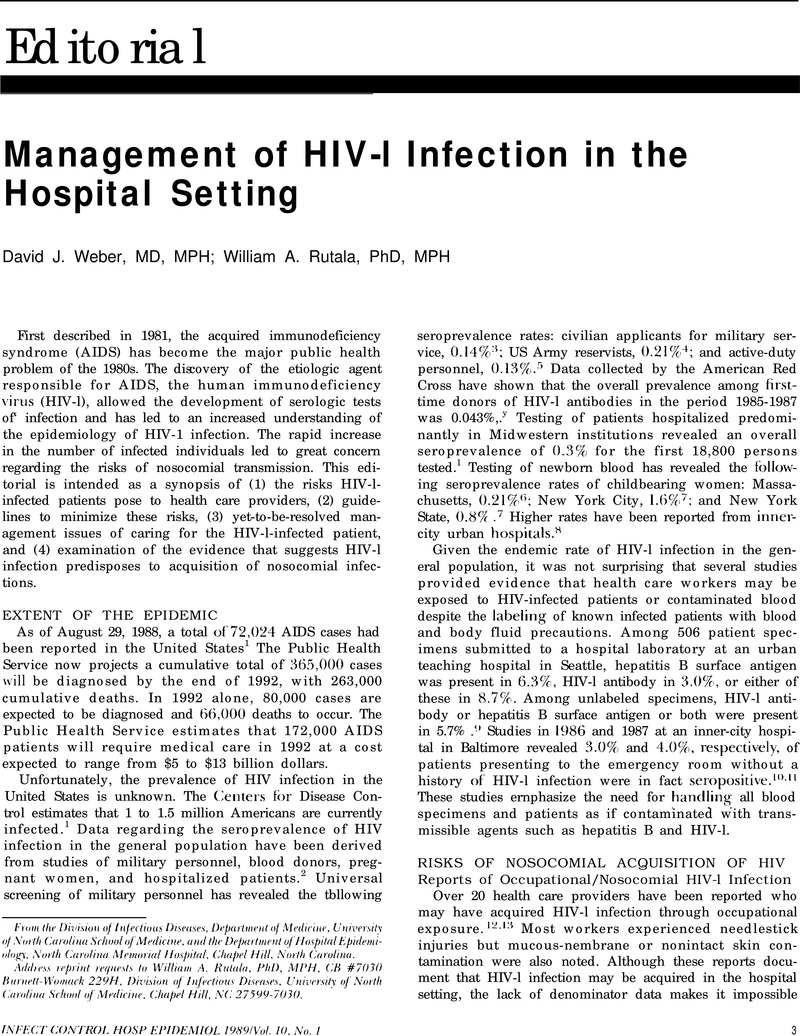Crossref Citations
This article has been cited by the following publications. This list is generated based on data provided by Crossref.
Becherer, Paul
and
Wilson, Susan E.
1989.
Management of early HIV-1 infection in adults.
Postgraduate Medicine,
Vol. 86,
Issue. 5,
p.
101.
Shirazian, Djamshid
Herzlich, Barry C.
Mokhtarian, Foroozan
and
Grob, David
1990.
Detection of HIV Antibody and Antigen (p24) in Residual Blood on Needles and Glass.
Infection Control & Hospital Epidemiology,
Vol. 11,
Issue. 4,
p.
180.
Shirazian, Djamshid
Herzlich, Barry C.
Mokhtarian, Foroozan
and
Grob, David
1990.
Detection of HIV Antibody and Antigen (p24) in Residual Blood on Needles and Glass.
Infection Control & Hospital Epidemiology,
Vol. 11,
Issue. 4,
p.
180.
Hoffmann, Karen K.
Weber, David J.
and
Rutala, William A.
1991.
Infection Control Strategies Relevant to Employee Health.
AAOHN Journal,
Vol. 39,
Issue. 4,
p.
167.





